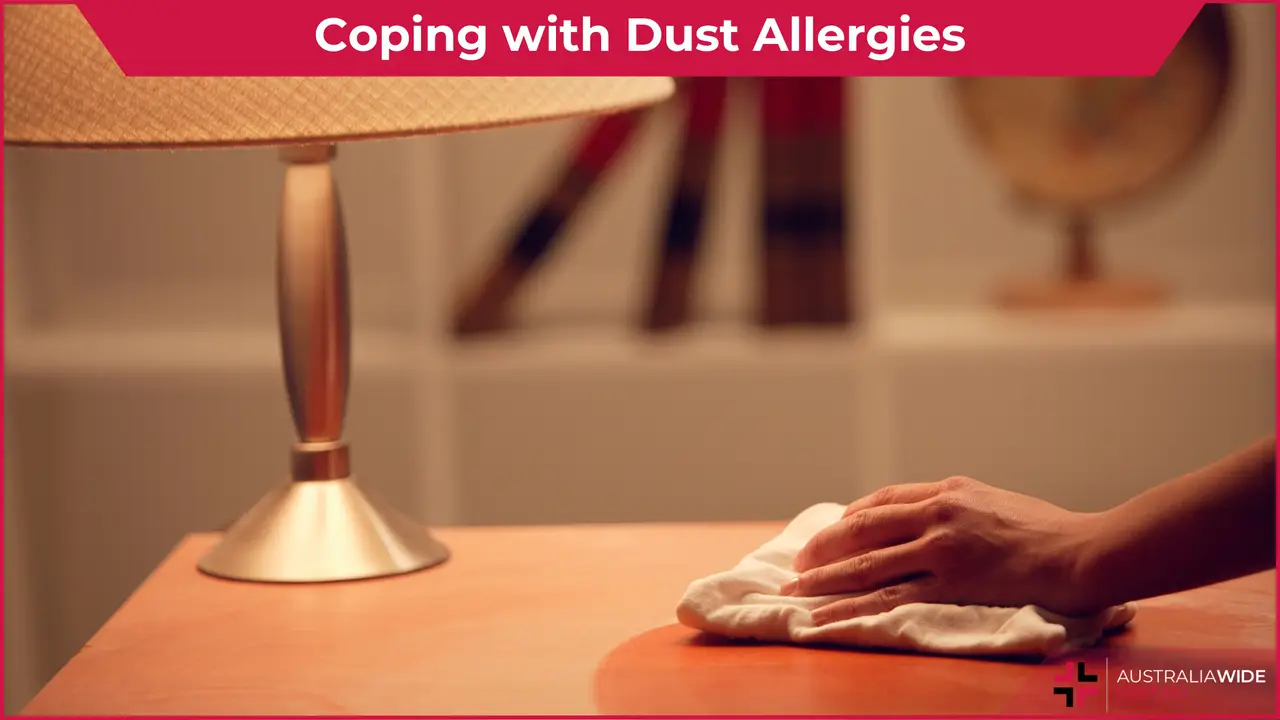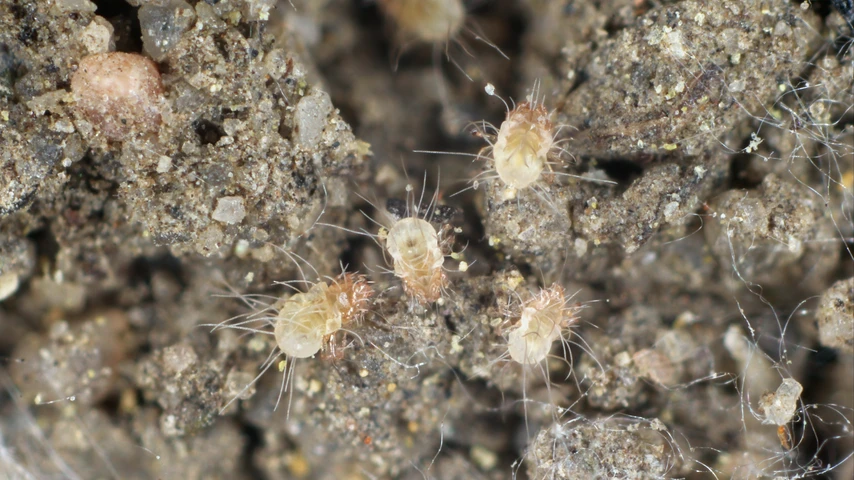Coping with Dust Allergies


For many Australians, our city and outdoor lifestyles come with a hidden challenge – dust allergies.
Dust mites, pollen, and other airborne particles can trigger allergic reactions, affecting a significant portion of the population.
In this article, we will explore the prevalence of dust allergies in Australia, the common triggers, and practical tips for managing and minimizing the impact of dust allergies.

Dust mites are microscopic mites that live throughout your house, feeding on the shed skin flakes that are the main component of dust.
They don’t bite like other household pests do, rather their secretions and faeces contain proteins that can trigger allergic reactions in some people. As such, it’s important to control not only the mites themselves, but also their secretions.
Dust mites thrive in warm and humid environments, making Australian homes, especially in coastal regions, ideal breeding grounds.
Bedding, carpets, and upholstered furniture can harbour these microscopic creatures, triggering allergic reactions in susceptible individuals.
Dust allergies fall under the umbrella of allergic rhinitis, more commonly known as hay fever.
Allergic rhinitis occurs when the nose and sinus are in contact with an allergen, resulting in an allergy response from the body and irritation of the nasal passages. Hay fever symptoms usually include a runny or blocked nose, sneezing, and watery eyes.
Aside from sinus issues, dust allergies can result in respiratory and dermatological irritations. They can contribute to respiratory conditions such as asthma. Symptoms of hay fever can include:
Due to the nature of the symptoms, it is very difficult to identify a single cause of allergic rhinitis. Dust mites, moulds, pollen levels, and animal dander all contribute, and exposure to multiple may exacerbate symptoms.
Your doctor may like you to try a skin prick test to ascertain whether your allergy symptoms are likely caused by dust mites, or by something else.
Symptoms may worsen during high pollen days, high pollen seasons, bushfires, humid days, and in areas with otherwise poor air quality.
According to the National Health Survey, around 19.3% of the Australian population are affected by allergic rhinitis. This is equal to about 4.6 million people.
This is driven partly by our climate. House dust mites are the most common allergen source in coastal cities and towns with high humidity – where a significant proportion of Australians live.
Maintain a Clean Living Space
Regular cleaning is essential to reduce dust mites.
Use a damp cloth for dusting to ensure that you actually remove the dust, rather than simply pushing it off a surface and into the air/onto another surface.
Vacuum the house at least weekly, but note that this process will increase the amount of dust mite allergen in the air for up to 20 minutes afterwards. Wear a mask, or have another person vacuum, if it is particularly triggering for your symptoms.
High efficiency particulate air (HEPA) filter vacuum cleaners may remove more allergens.
Bedding should be washed in hot water (greater than 60 degrees Celsius) weekly to kill the dust mites and wash away their allergen.
Using commercial products containing tea tree or eucalyptus oils will kill dust mites in cold water, as will hot tumble drying for 10 minutes after they are dry.
Remove Breeding Grounds
Dust mites love to breed in soft, warm materials. The Australasian Society of Clinical Immunology and Allergy recommends removing sheepskin or woollen underlays and all soft toys from the bed and bedroom.
Toys kept in the bedroom should be wooden or plastic so that they are easily washable.
Soft toys should be washed in eucalyptus oil weekly, or placed in a freezer overnight to kill mites. Note, this does not remove the allergen.
They also recommend removing carpet flooring, and replacing with wood, linoleum, or tiles. Vacuuming cannot remove all of the allergens from within the carpet.
Invest in Anti-Allergen Bedding
Encase mattresses, pillows, and duvets in allergen-proof covers to create a barrier against dust mites. Opt for hypoallergenic bedding materials to further reduce the risk of allergic reactions.
These covers should be washed every two months in hot water.
Some health funds may cover the cost of these items – it is worth investigating for you and your family.
Prepare for Bushfire Seasons
During bushfire seasons, individuals with dust allergies should take extra precautions. Keep windows and doors closed, use air purifiers, and follow health advisories to ensure the safety of respiratory health.
Consult a Healthcare Professional
If symptoms persist or worsen, it is crucial to seek advice from a healthcare professional. They can conduct allergy tests, prescribe medications, and offer personalized recommendations for managing dust allergies.
There are a number of ways to reduce the symptoms of dust allergies. Please note, you should not attempt any of these until you have consulted with a health care professional to determine the best option for you.
Treatment options, depending on the symptoms of dust allergies, include:
There is no cure for allergic rhinitis, but you can work with your health care professional to create a plan to minimise the symptoms and the impact as much as possible.
Living with dust allergies in Australia requires a proactive approach to minimize exposure to common triggers.
By adopting practical strategies and staying informed about environmental conditions, individuals can enjoy the beauty of the Australian landscape while effectively managing the challenges posed by dust allergies.
Remember, a clean and allergen-resistant living space, combined with professional guidance, can significantly improve the quality of life for those affected by dust allergies.

October 2, 2013
In an asthma or anaphylaxis emergency you should know the symptoms, remove triggers, and know how to respond. Read on to understand these important aspects in the context of such an emergency.

May 7, 2024
Asthma, a chronic respiratory condition affecting millions worldwide, is often shrouded in myths and misconceptions. Despite how common it is, there is a distinct lack of common knowledge. This is leading to potential mismanagement and unnecessary anxiety for those living with asthma.

February 19, 2024
For many Australians, our city and outdoor lifestyles come with a hidden challenge – dust allergies. Dust mites, pollen, and other airborne particles can trigger allergic reactions, affecting a significant portion of the population.